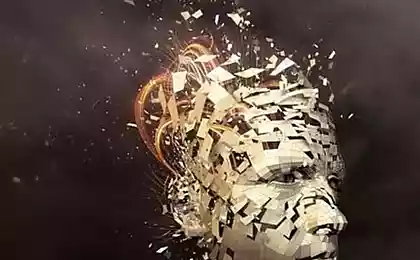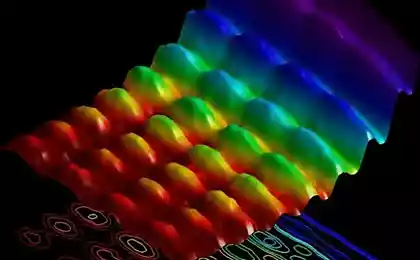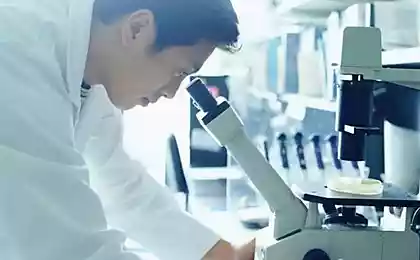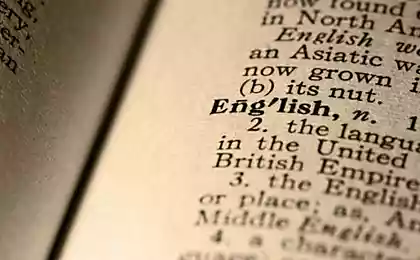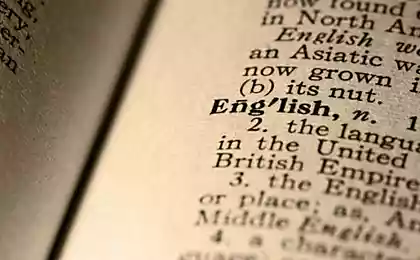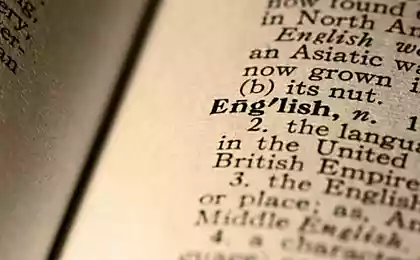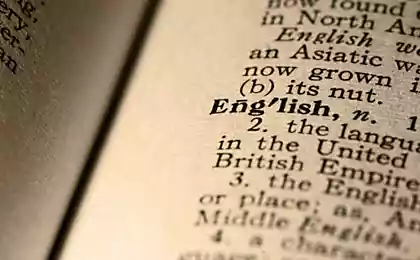1274
About Neuroscience. Physics, biology and IT together
We have already mentioned that one of the results of studies in university (in our opinion) should be the breadth of knowledge. Today we publish the post of one of our graduates, who decided to change the direction of work after university, and try to see what came of it.

I want to tell you about interdisciplinary research (very fashionable phrase, is not it), which now occupies. While studying at the University (Bachelor of St. Petersburg Polytechnic University and the Academic Master in nanotechnology), I worked in several laboratories Physico-Technical Institute. Joffe and engaged in various forms semiconductors (molecular beam epitaxy, deep levels, semiconductor lasers). Now the area of my research has changed dramatically and is called Neuroscience. Geographically - Stanford, California .
Let's try to understand.
The purpose of this science is quite ambitious - to understand how the brain. Historically, the question has been studied in the fields of biology, medicine, psychology and a little philosophy. Now leading genetics, physics, mathematics and computer science. In general, neuroscience has established itself as a separate science in universities even began to appear relevant departments. In the human brain about 100 billion neurons and 150 trillion connections between them - the scale, of course, incomprehensible. Brain at the moment is perhaps one of the most poorly studied natural phenomena.
Many have probably heard that in the nervous system information is transmitted in the form of electrical impulses. The video shows the activity of several dozens of individual neurons in mouse brain:
Mouse (genetically modified with fluorescent neurons) while alive and well (which is very important because in the dead brain look especially not on that). The video level of the fluorescence changes when the generation of neurons in these electric pulse, and result in cell bodies "flash." Electrical impulse further betrayed along the axon (output) one neuron to the dendrites (inputs) of others. The device each neuron individually studied well enough. Also know what area of the brain responsible for what. However, at the level of neural cell assemblies - complete darkness in scientific terms.
As an ensemble of neurons performs certain functions for processing information (and which specific)? As the activity of neurons in the encoded memory and sensory signals as presented? What general properties of the ensemble of neurons as a dynamic system, as well as many other interesting questions - and there is something that many scientists are struggling in this science.
Many agree that it was the scientists of physical and mathematical and engineering will be able to move forward in neuroscience, more slender build theories based on abstract mathematical models. Without biological "magic", however, is not enough. Such is the symbiosis of science. By the way, the vast majority of neural networks are studied in computer science networks of real neurons yet have very little to do. Real networks are highly non-linear, and their dynamics, even in small scale rather poorly described by the existing mathematical models. But for sure, if we can construct a theory, the information technology borrow a set of algorithms in the brain in the future. For example, pattern recognition algorithms from Google somehow work, but, of course, is not energy efficient and is not nearly as reliable as your brain (for a piece of chocolate of course).
Finally, about what, exactly, have to deal with me. For two years I have designed and created a setup for optical detection of activity on the scale of a few thousand neurons. Installation is quite complicated, with all optics, electronics, mechanics and software were made, in general, from scratch. As a result, one can obtain data - such as a video only considerably larger area of the brain, of the order of 1-2.
If we draw an analogy with the semiconductors, then without a scanning electron microscope to make a semiconductor laser is unlikely. So here - need tools for surveillance, detection and manipulation of the object of study. Now, when there was a tool to be the most interesting period - the actual experiments, and after understanding the results and hopefully some progress in the understanding of the structure of the brain.
Many, I think, are interested in the question of how nanotechnology and training in the Academic University is related to what I'm doing now. Here are a few considerations. Whatever you decide to do in the future - will still have to constantly learn new skills, knowledge and skills and no Master can not teach you all the capabilities (and hopefully not put such purposes). This is especially true when you are doing research, as about the fact that no one has yet discovered or did not, no one can tell you to new ideas and have to hit myself. In AU created an environment in which not only provide knowledge, but there are skills to solve new problems to deal with scientific and technical problems. This in my opinion is very important. Of course, if you decide after the end of the Judiciary to investigate the physics of semiconductors and nanotechnology - AU is the best place of those that I know. But even if you want to change the direction of then partially or even radically, then, firstly, all the doors are open, and, secondly, your knowledge will work for you.
Oleg Rumyantsev
Source: habrahabr.ru/company/spbau/blog/218573/

I want to tell you about interdisciplinary research (very fashionable phrase, is not it), which now occupies. While studying at the University (Bachelor of St. Petersburg Polytechnic University and the Academic Master in nanotechnology), I worked in several laboratories Physico-Technical Institute. Joffe and engaged in various forms semiconductors (molecular beam epitaxy, deep levels, semiconductor lasers). Now the area of my research has changed dramatically and is called Neuroscience. Geographically - Stanford, California .
Let's try to understand.
The purpose of this science is quite ambitious - to understand how the brain. Historically, the question has been studied in the fields of biology, medicine, psychology and a little philosophy. Now leading genetics, physics, mathematics and computer science. In general, neuroscience has established itself as a separate science in universities even began to appear relevant departments. In the human brain about 100 billion neurons and 150 trillion connections between them - the scale, of course, incomprehensible. Brain at the moment is perhaps one of the most poorly studied natural phenomena.
Many have probably heard that in the nervous system information is transmitted in the form of electrical impulses. The video shows the activity of several dozens of individual neurons in mouse brain:
Mouse (genetically modified with fluorescent neurons) while alive and well (which is very important because in the dead brain look especially not on that). The video level of the fluorescence changes when the generation of neurons in these electric pulse, and result in cell bodies "flash." Electrical impulse further betrayed along the axon (output) one neuron to the dendrites (inputs) of others. The device each neuron individually studied well enough. Also know what area of the brain responsible for what. However, at the level of neural cell assemblies - complete darkness in scientific terms.
As an ensemble of neurons performs certain functions for processing information (and which specific)? As the activity of neurons in the encoded memory and sensory signals as presented? What general properties of the ensemble of neurons as a dynamic system, as well as many other interesting questions - and there is something that many scientists are struggling in this science.
Many agree that it was the scientists of physical and mathematical and engineering will be able to move forward in neuroscience, more slender build theories based on abstract mathematical models. Without biological "magic", however, is not enough. Such is the symbiosis of science. By the way, the vast majority of neural networks are studied in computer science networks of real neurons yet have very little to do. Real networks are highly non-linear, and their dynamics, even in small scale rather poorly described by the existing mathematical models. But for sure, if we can construct a theory, the information technology borrow a set of algorithms in the brain in the future. For example, pattern recognition algorithms from Google somehow work, but, of course, is not energy efficient and is not nearly as reliable as your brain (for a piece of chocolate of course).
Finally, about what, exactly, have to deal with me. For two years I have designed and created a setup for optical detection of activity on the scale of a few thousand neurons. Installation is quite complicated, with all optics, electronics, mechanics and software were made, in general, from scratch. As a result, one can obtain data - such as a video only considerably larger area of the brain, of the order of 1-2.
If we draw an analogy with the semiconductors, then without a scanning electron microscope to make a semiconductor laser is unlikely. So here - need tools for surveillance, detection and manipulation of the object of study. Now, when there was a tool to be the most interesting period - the actual experiments, and after understanding the results and hopefully some progress in the understanding of the structure of the brain.
Many, I think, are interested in the question of how nanotechnology and training in the Academic University is related to what I'm doing now. Here are a few considerations. Whatever you decide to do in the future - will still have to constantly learn new skills, knowledge and skills and no Master can not teach you all the capabilities (and hopefully not put such purposes). This is especially true when you are doing research, as about the fact that no one has yet discovered or did not, no one can tell you to new ideas and have to hit myself. In AU created an environment in which not only provide knowledge, but there are skills to solve new problems to deal with scientific and technical problems. This in my opinion is very important. Of course, if you decide after the end of the Judiciary to investigate the physics of semiconductors and nanotechnology - AU is the best place of those that I know. But even if you want to change the direction of then partially or even radically, then, firstly, all the doors are open, and, secondly, your knowledge will work for you.
Oleg Rumyantsev
Source: habrahabr.ru/company/spbau/blog/218573/
Plan a mysterious meeting "Top 100" at Apple. Letter Jobs
UCP Foundation and Pavel Durov filed lawsuits against each other





